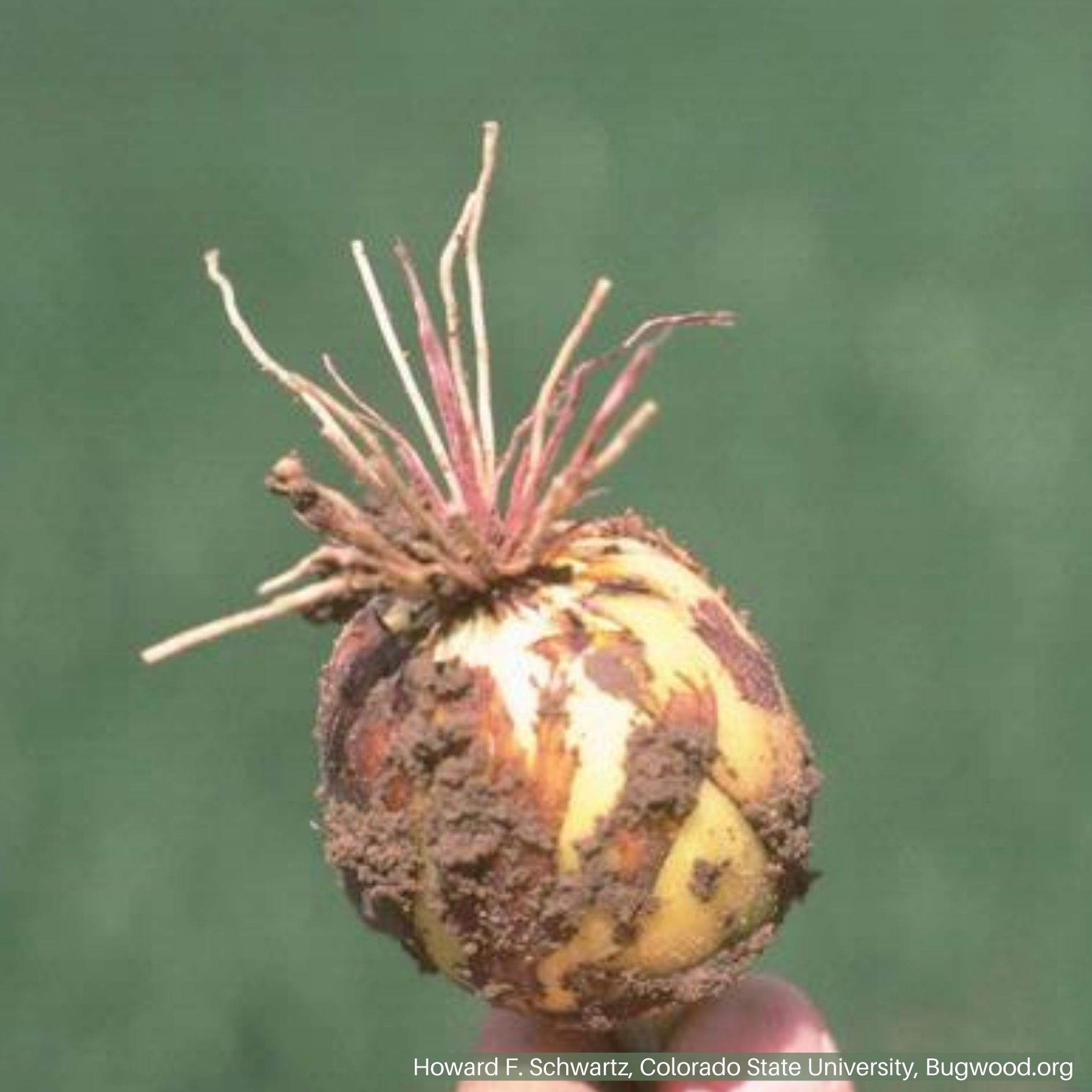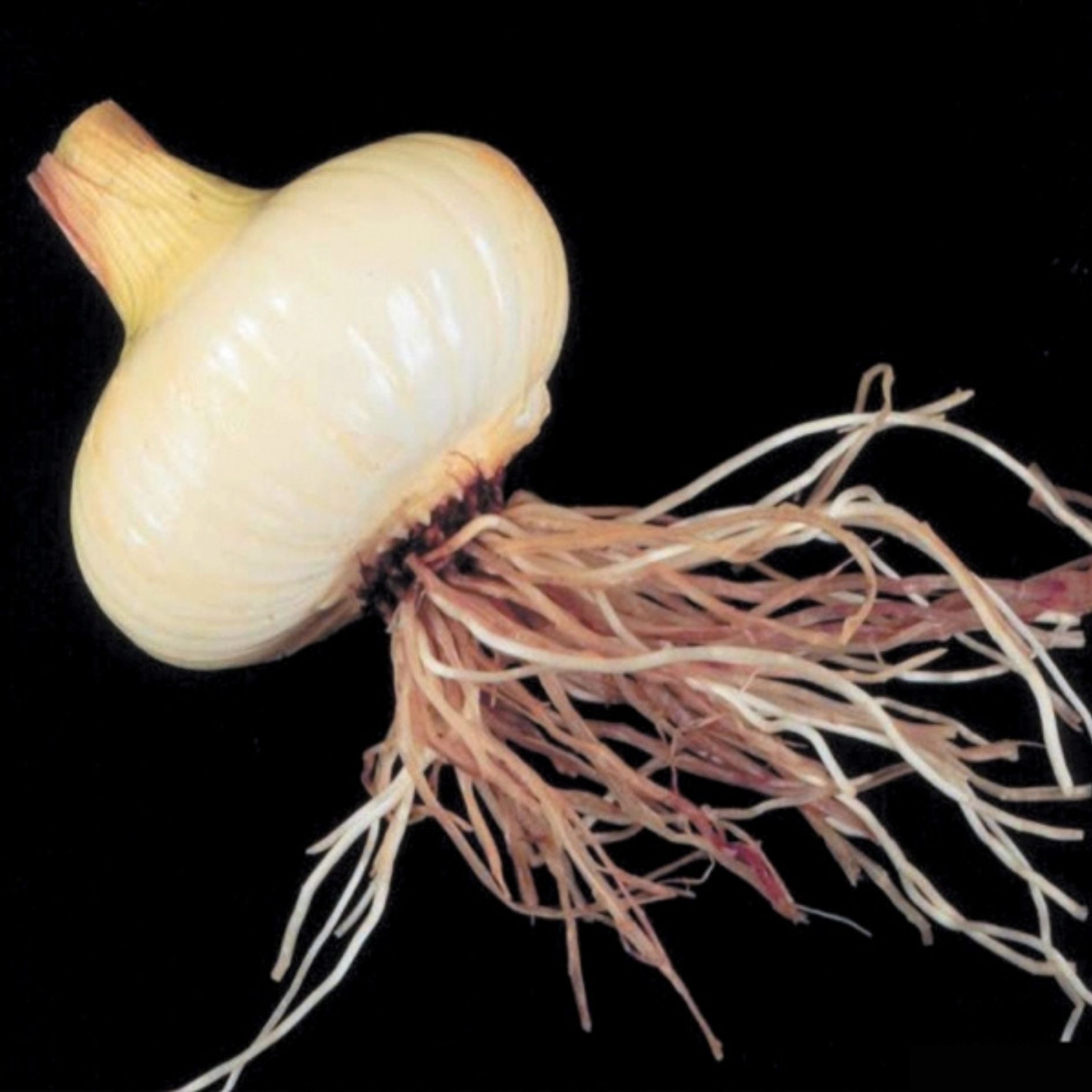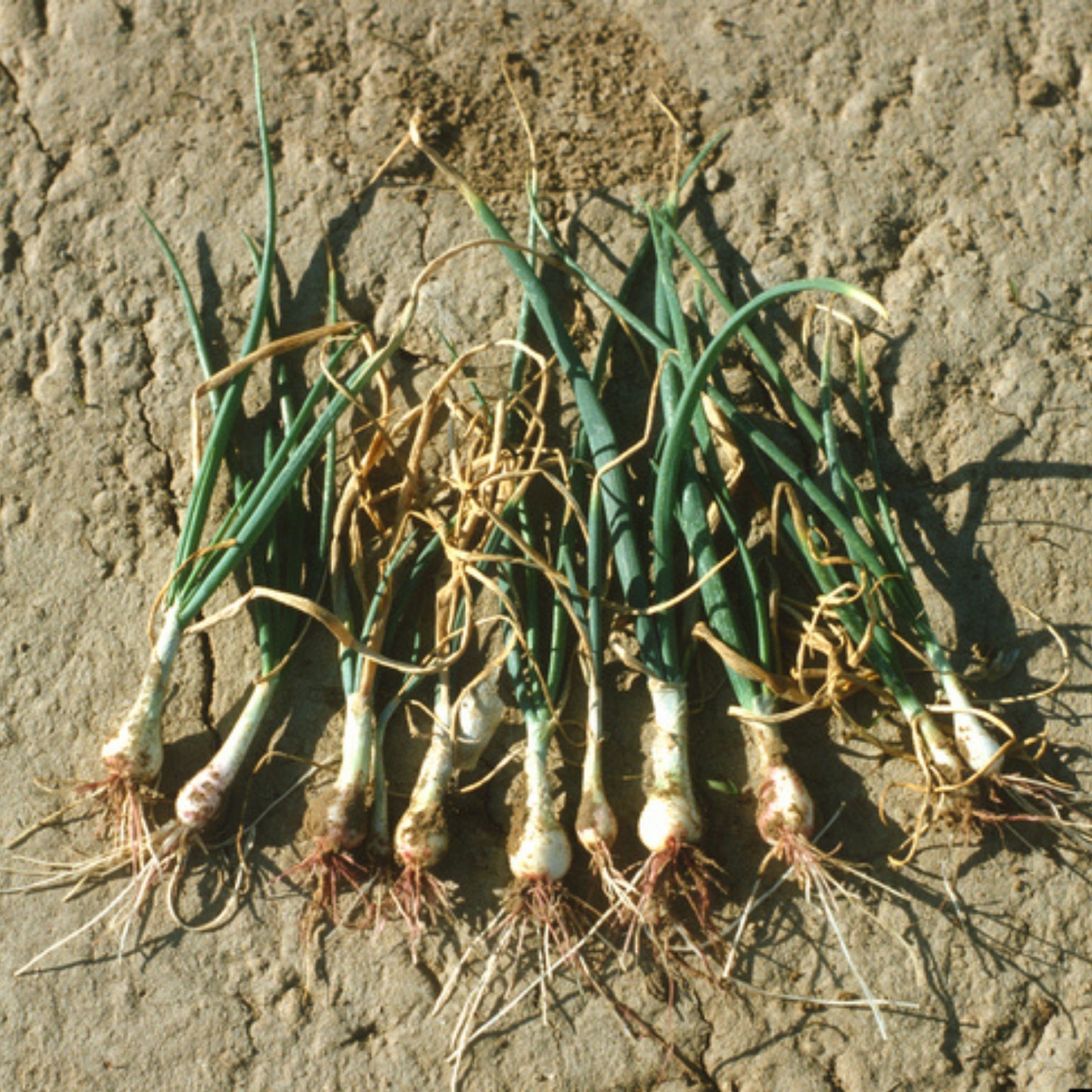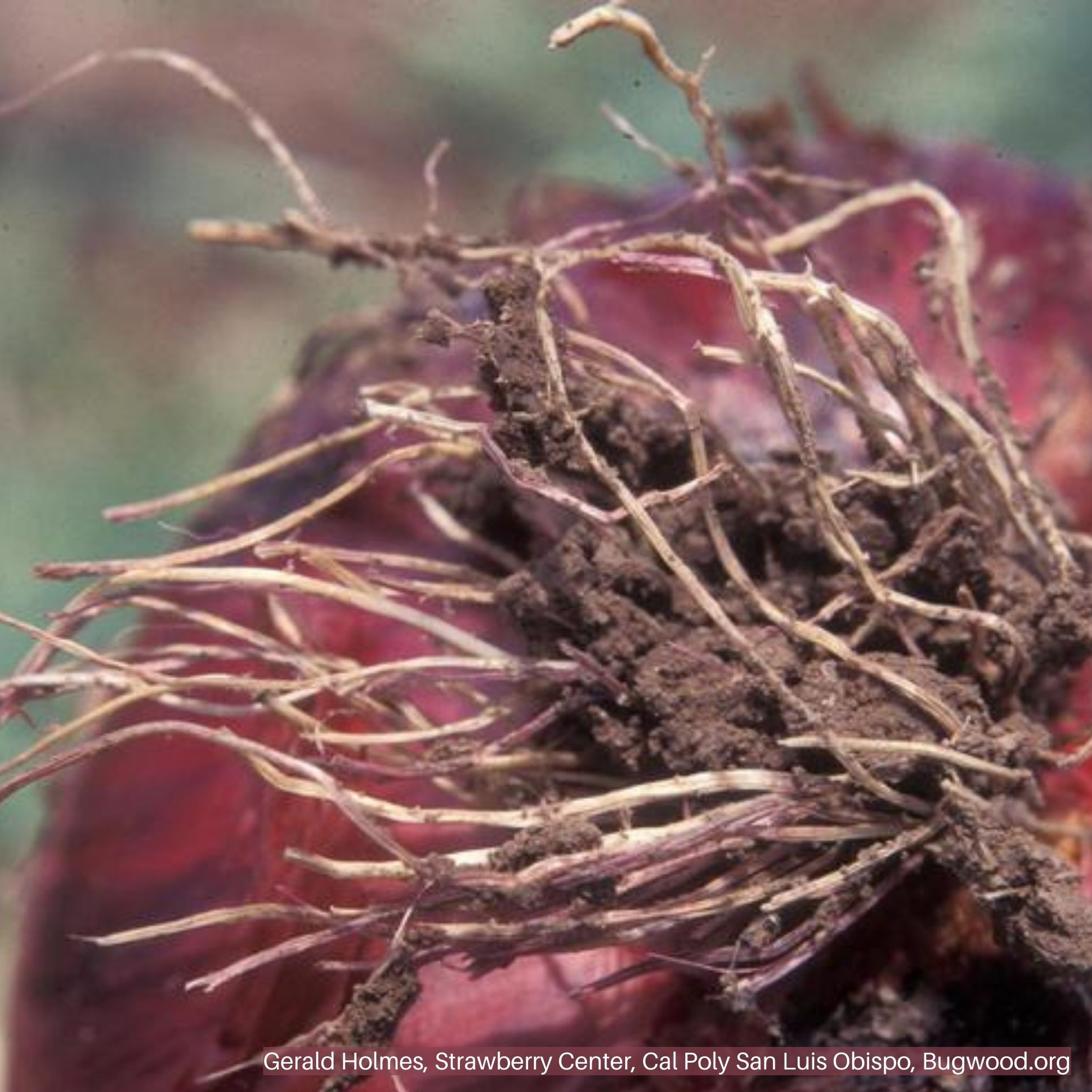Pink Root of Onion
VEGETABLE HOSTS
- Onion
DESCRIPTION
Pink root (Phoma terrestris) is a devastating disease in onion production. The fungus is found worldwide in the soil and can be up 45cm (1.5 ft) deep.
Phoma terrestris is primarily an onion pathogen but can occasionally cause disease on other plants such as cereals, corn, cucurbits, pepper, spinach or soybean.
Plant stresses such as drought, cold, nutrient deficiencies/toxicities, insects and other diseases can increase disease severity.
BIOLOGY
The fungus, Phoma terrestris, is commonly found in soil. It can penetrate onion roots directly without the need for wounds and less vigorous plants are more susceptible. Symptoms develop 7-21 days after infection. Phoma terrestris can survive for a very long time in soil and feed on plant debris. It is most active at temperatures of 75–85ºF.
The severity of the disease is higher in fields with heavy, poorly drained soils and incidence is increased every time onions are grown in a field. The pathogen can be spread by irrigation water to unaffected areas in fungus but not against the more virulent ones.
Leaves of infected plants often become infected with other pathogens such as Alternaria porri (causal agent of purple blotch). Yield losses are greatest when plants are infected early in the season resulting in a poor root system that cannot keep up with water uptake during hot temperatures.
SYMPTOMS
- Small and stunted plants (above ground).
- Leaves start to die back.
- Symptoms can simulate drought or nutrient deficiency (above ground).
- Pink colored roots (below ground).
- Roots eventually turn dark red or purple and start to dry up.
- Eventually root death.
- Reduced bulb size.
GENERAL MANAGEMENT
The best management option is the use of resistant varieties. There are resistant onion varieties available but resistance levels can vary from field to field due to genetic variability of the pathogen. Talk to your local seed provider about varieties that may work in your area.
Maintain healthy plants with optimum fertility, control of other diseases and insect pests, and avoid planting onion after onion. Even though crop rotation does not have an effect on the disease, planting onion every five years can keep disease incidence low. Disease incidence goes up with every onion crop and when onions are planted after cereal crops.
Another option is soil fumigation using metam sodium or chloropicrin which works against some strains of the fungus. However, fumigation is very expensive.





